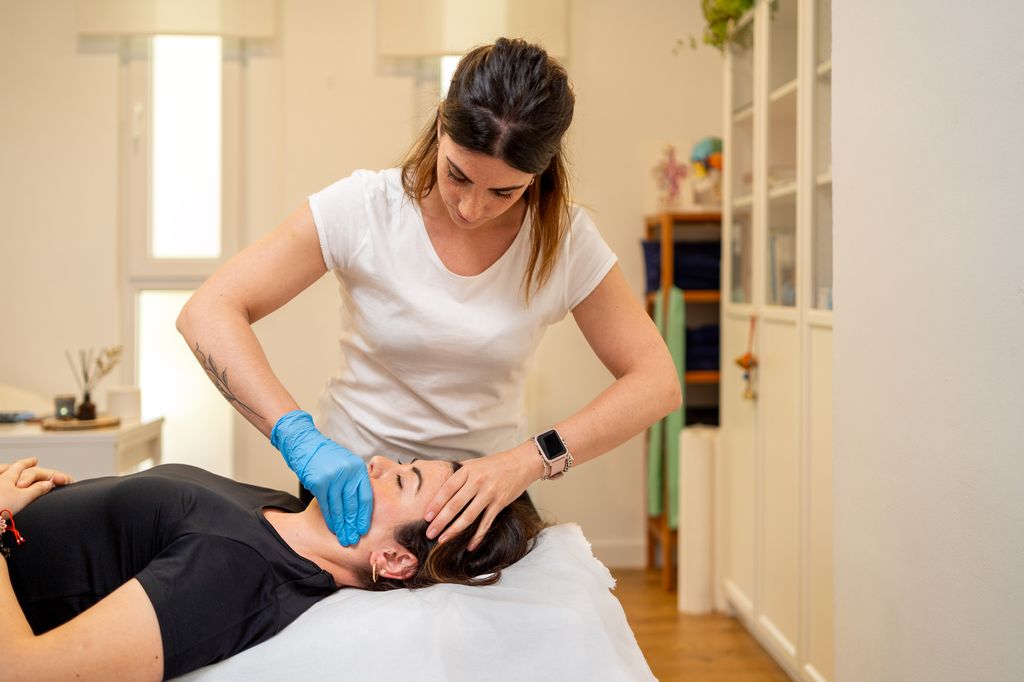bruxism It is a condition that causes endless pain both at the mandibular level and in the ears, head or neck, in addition to associated problems such as dental wear or greater sensitivity in teeth, changes in the bite, loss of enamel and damage to pieces such as fillings or crowns. There are, as we can see, many problems that it can cause us.
And, although we do not perceive it, during the night We clench our teeth and molars tightly, or they grind, tensing the muscles in the area and causing intense pain from the morning when we get up, or even capable of waking us up and not letting us sleep.
Is bruxism a growing problem?
The first thing that qualifies Michelle Pawlydentist in the Care, Innovation and Clinical Quality department of Sanitas Dental, is that bruxism cannot be considered a pathology in itself, but rather a sign of one or more underlying conditions. “Bruxism is the activity of the chewing muscles that is characterized by repetitive or sustained contact of teethalthough there may be no dental contact and there may be a forced jaw posture”, he explains to us. Therefore, in his opinion, moving away from the classic view that it is a pathology, we can say that it is a symptomatology that is increasing. “As demonstrated by the Sanitas Oral Health Study 2024. According to this analysis, more than 1 in 5 Spaniards have been diagnosed with bruxism (21.13% vs 18.91% in 2023),” he points out.
What are the main causes of this health problem?
It is considered of multifactorial cause, taking into account a combination of several psychosocial, physiological/biological and exogenous factors, and this is how the Sanitas dentist details them:
- Psychosocial factors: sensitivity to stress and anxiety.
- Physiological/biological factors: Dopamine has an inhibitory influence, while adrenaline and norepinephrine are activators.
- Exogenous factors: Alcohol, smoking, caffeine, and some drugs can have an activating influence.
“In the latest scientific definitions, it is ruled out that it is a cause of the position of the teeth,” he indicates.
Stress management through relaxation techniques, such as meditation and sleep hygiene, is recommended.
What solutions are there to address this problem?
As we said, bruxism is always a sign of one or more underlying conditions. Therefore, Dr. Pawly notes that unless the specific cause is identified, Treatment is aimed at managing negative consequences when these are present.
- First of all, the doctor indicates that it is advisable use unloading splints that protect teeth from fractures and fissures and reduce wear.
- He also recommends the stress management through relaxation techniques, such as meditation and sleep hygiene. And both work and emotional stress due to personal issues are not the best allies of bruxism, so it is essential to relax with yoga, meditation or mindfulness classes, and if we have some time, spend a few minutes doing facial gymnastics. , which will help relax muscles.
- The Sanitas expert also suggests arranging a appointment with a physiotherapist. In patients with muscle pain and fatigue, stretching and jaw dynamics exercises help relieve muscle tension.
- Other recommendations when we have jaw pain due to bruxism refer to the food, avoiding solids that require a lot of chewing, and the application of heat to the stressed area.
Options beyond the discharge splint
We wonder if, faced with such a common problem in our society, there are options beyond the use of the well-known unloading splints and the management of underlying stress. “If the techniques mentioned above do not work and we are faced with a severe case, it is evaluated Treat the area with botulinum toxin. Reduce the intensity, since it reduces the force of muscle contraction,” suggests the Sanitas specialist.
Recently we can also mention a method called Wonder Face, from the Spanish company Wonder Technology, since it treats bruxism in an innovative way, combining neuromuscular emissions and radiofrequency: “This therapeutic approach acts on the facial muscles, promoting relaxation and also reducing accumulated tension. Neuromuscular emissions stimulate muscle fibers, improving circulation and facilitating relief from pain associated with bruxism. For its part, radiofrequency penetrates the deepest layers of the skin, which helps and promotes cell regeneration, restoring muscle tone. Together, these techniques not only improve muscle function, they also provide well-being and quality of life, allowing for a more restful rest without discomfort,” he details. Alexander Perezfounding CEO of Wonder Technology.
Useful tips if you have bruxism
- Especially, avoid chewing gum or biting objects like pens so as not to increase tension in the jaw.
- Besides, take breaks throughout the day to relax your face and jawespecially if you work in front of the computer.
- Avoid alcohol, tobacco and caffeine.
- It is also useful listen to relaxing music or drink an herbal tea to reduce daily stress. Keeping the room cool, excess heat will also make it more difficult for us to sleep and rest properly.
- And before sleeping, apply heat to the facial area with a warm towel to relax the muscles.
In more severe cases, it can lead to sleep problems and affect the quality of daily life due to constant pain and discomfort.
Avoid negative consequences
All of these measures should be taken to try to alleviate larger problems and consequences that may arise from a bruxism problem that is not corrected and addressed in time.
“Some types of bruxism do not require treatment, however, when there are effects on the structure of the teethsuch as severe dental wear, cracks in the teeth and even fractures, it is necessary to seek the help of a dental professional,” he tells us.
And, furthermore, it can cause chronic headachestension in the jaw and neck, and problems in the temporomandibular joint (TMJ), making it difficult to chew or open the mouth. “In more severe cases, it can lead to sleep problems and affect the quality of daily life due to constant pain and discomfort,” concludes Dr. Michelle Pawly.


